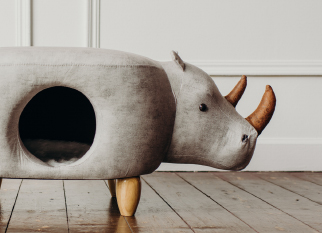Pet Owners Prioritize Size And Support In New Pet Sofa Bed Designs
As pet ownership becomes more integrated into modern lifestyles, the expectations around pet products have evolved significantly. In particular, furniture designed for animals is no longer just about providing a basic place to rest—it’s about ensuring the right combination of size, support, and compatibility with home interiors. Among the lots of sought-after items are the large pet sofa bed and the pet day bed, each addressing distinct needs while aligning with contemporary design and functionality standards.

Pet owners are paying closer attention to dimensions and structural design, especially for larger breeds or multiple-pet households. A large pet sofa bed offers not only more surface area but also increased support for pets who need space to stretch or shift positions throughout the day. These beds often feature firm yet cushioned bases, built to accommodate the weight and size of bigger animals without sagging over time. This consideration for stability and comfort is a key factor driving purchase decisions.
The pet day bed caters to a different but equally important routine in a pet’s life—daytime lounging and shorter rest periods. Unlike traditional pet beds that remain stationary and are used mainly at night, the pet day bed is often positioned in central parts of the home where pets like to stay near their owners. It provides a comfortable place for pets to relax without having to climb onto human furniture, and its lower profile and softer design make it an inviting option for casual rest.
Materials are another area where size and support play a role. In the case of a large pet sofa bed, covers are often made from durable textiles that can withstand daily wear while remaining breathable and soft to the touch. Some versions come with removable and washable covers, which adds practicality for households with active pets. The fill materials also vary, with many designs offering memory foam or supportive polyfill to help maintain shape and improve overall comfort.
Meanwhile, a pet day bed may use lighter materials but still prioritize comfort. These beds are usually easier to move and reposition, allowing pet owners to adapt the bed’s location to fit seasonal lighting, temperature preferences, or changes in household routine. Despite their portability, they’re designed with enough structure to offer gentle support—especially important for senior pets who benefit from a consistent resting surface.
The emphasis on structure and fit reflects a broader trend among consumers who want pet furniture to meet standards similar to those of their own furnishings. A large pet sofa bed is often selected not just for its size but for how it complements the layout of a living room or bedroom. Designers now consider aesthetic factors like shape, stitching, and fabric texture in addition to the underlying support systems. This balance helps pet beds integrate into spaces without standing out or feeling out of place.
Likewise, the pet day bed is now offered in a variety of shapes and colors that make it easier to match existing decor. Rather than hiding pet beds when guests arrive, many owners now choose options they’re proud to display. These beds enhance the environment while keeping pets nearby and comfortable, serving a dual purpose that has become increasingly valuable in modern homes.
As pet owners become more selective, the focus on size and support in product design is only likely to grow. Whether it's a thoughtfully designed large pet sofa bed or a versatile pet day bed, the priority remains the same: creating a safe, stylish, and supportive space that fits the daily rhythms of both pets and their owners. This shift in expectations is reshaping the way we think about pet furniture—less as an afterthought, and more as a considered part of everyday living.



 English
English Français
Français Español
Español Deutsch
Deutsch














